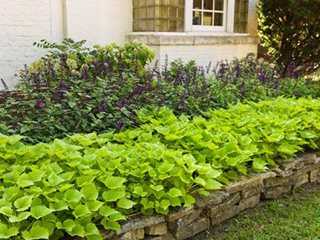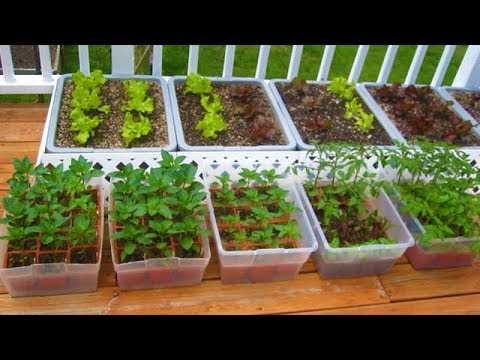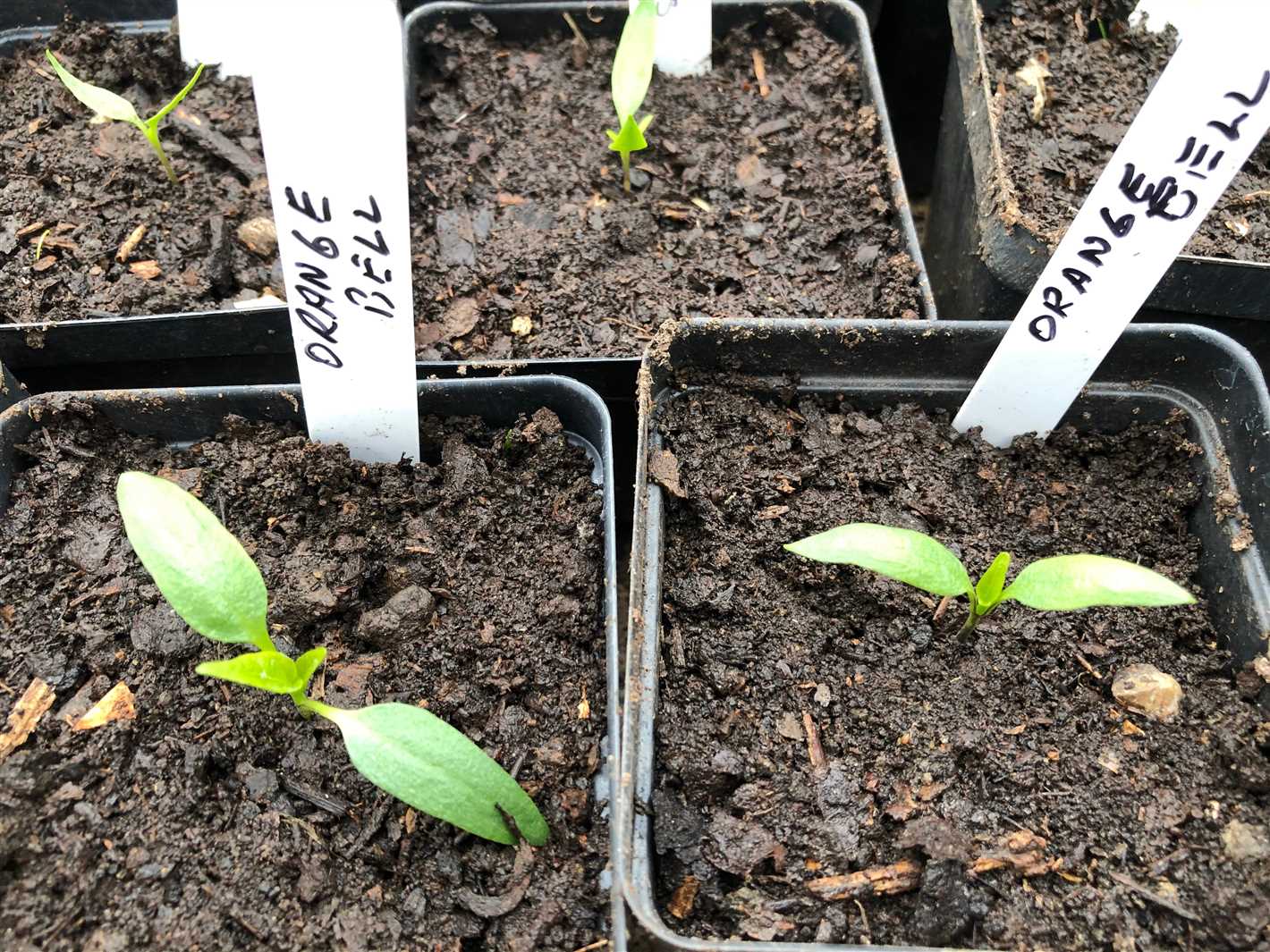- Step 1: Choosing the Right Seeds
- 1. Variety
- 2. Quality
- 3. Organic or Conventional
- 4. Seedling or True Seeds
- 5. Disease Resistance
- Step 2: Preparing the Soil
- 1. Choose the right location
- 2. Clear the area
- 3. Test the soil
- 4. Improve the soil structure
- 5. Create raised beds or ridges
- 6. Add fertilizer
- 7. Water the soil
- Step 3: Planting the Seeds
- Step 4: Providing Adequate Water
- 1. Watering Frequency
- 2. Watering Techniques
- 3. Watering Amount
- 4. Mulching
- 5. Drought Periods
- Step 5: Providing Proper Sunlight
- 1. Choose a Sunny Location:
- 2. Orientation:
- 3. Use Reflective Mulch:
- 4. Regularly Check Sunlight Levels:
- 5. Avoid Overexposure:
- 6. Adjust for Climate and Season:
- Step 6: Fertilizing the Plants
- 1. Soil Testing
- 2. Choosing the Right Fertilizer
- 3. Organic Fertilizers
- 4. Applying Fertilizer
- 5. Timing of Fertilization
- 6. Watering after Fertilization
- 7. Monitoring Plant Health
- Step 7: Managing Pests and Diseases
- Pests
- Diseases
- Step 8: Harvesting and Storing the Batat
- 1. Determine the right time to harvest
- 2. Dig up the tubers
- 3. Cure the batat
- 4. Trim and clean the tubers
- 5. Store the batat
- 6. Check for spoilage
- “Question-Answer”
- What is batat?
- Can I grow batat from seeds?
- What are the steps to grow batat from seeds?
- How long does it take to grow batat from seeds?
- What are the recommended growing conditions for batat?
- “Video” Unbelievably High Yielding 2 In 1 Tomato And Potato Growing
Growing batata, or sweet potato, from seeds can be a rewarding experience for any gardener. Not only does it provide you with a delicious and nutritious vegetable to enjoy, but it also allows you to be in control of the entire growing process.
Before you start growing batata from seeds, it’s important to understand the proper steps and techniques to ensure a successful harvest. This article will guide you through the process, from selecting the right seeds to nurturing the plants until they are ready for harvest.
Step 1: Selecting the Right Seeds
The first step to growing batata from seeds is selecting the right seeds. Look for batata seeds that are healthy and have a good germination rate. You can buy seeds from a reputable nursery or online supplier. Alternatively, you can save seeds from mature batata plants that you have grown in your garden.
Tip: Choose a batata variety that is well-suited to your climate and growing conditions. Some varieties are more tolerant of cold or hot temperatures, drought, or pests.
Step 2: Preparing the Seeds for Planting
Before you plant the batata seeds, you need to prepare them for germination. Start by soaking the seeds in water for 24 hours. This will help to soften the outer shell and improve their chances of germination. After soaking, remove the seeds from the water and allow them to dry for a few days.
Note: Batata seeds can take a while to germinate, so be patient. It can take up to a month for the seeds to sprout.
Step 1: Choosing the Right Seeds
When it comes to growing batat, or sweet potatoes, from seeds in your vegetable garden, it is important to choose the right seeds. Here are some key factors to consider when selecting your batat seeds:
1. Variety
Batat comes in various varieties, each with its own taste, texture, and growing requirements. Some common batat varieties include Beauregard, Covington, and Jewel. Research and select a variety that suits your preferences and growing climate.
2. Quality

Opt for high-quality batat seeds to increase your chances of success. Look for seeds that are plump, firm, and free from any signs of damage or disease. It is also advisable to purchase seeds from reputable suppliers or certified nurseries.
3. Organic or Conventional
Decide whether you want to grow your batat from organic or conventional seeds. Organic seeds are produced without the use of synthetic chemicals or genetically modified organisms (GMOs). Consider factors such as personal preferences, environmental concerns, and availability when making this choice.
4. Seedling or True Seeds
There are two common types of batat seeds available – seedlings and true seeds. Seedlings are young plants that have been grown from batat cuttings or slips. They offer a quicker and more reliable way to grow batat but may have limitations in terms of variety selection. True seeds, on the other hand, are the traditional way of growing batat from seeds. They provide more variety options but require more time and effort to grow into mature plants.
5. Disease Resistance
Consider selecting batat seeds that have built-in resistance to common batat diseases such as sweet potato scurf, fusarium wilt, and sweet potato virus. This can help ensure the health and productivity of your batat plants.
By carefully selecting the right batat seeds, you can set the foundation for a successful batat growing experience in your vegetable garden.
Step 2: Preparing the Soil
Before planting your batat seeds, it’s important to prepare the soil to create the optimal growing conditions for your plants. Here are some steps to follow:
1. Choose the right location
Find a sunny spot in your vegetable garden that receives at least 6 hours of direct sunlight each day. Batat plants thrive in warm weather, so choose a location that has good drainage and is protected from strong winds.
2. Clear the area
Remove any weeds or rocks from the selected area. Weeds compete with batat plants for nutrients and water, so it’s important to clear them out before planting. Use a garden rake or hoe to loosen the soil and remove any debris.
3. Test the soil
Use a soil testing kit to check the pH level of your soil. Batat plants prefer a slightly acidic soil with a pH level between 5.8 and 6.2. If the pH level is too low or too high, you can adjust it by adding lime or sulfur to the soil accordingly.
4. Improve the soil structure
Since batat plants require loose and well-draining soil, you can improve the soil structure by adding organic matter. Spread a layer of compost or well-rotted manure over the area and use a garden fork or tiller to mix it into the soil. This will help improve the soil’s fertility and drainage.
5. Create raised beds or ridges
Batat plants benefit from raised beds or ridges, as they provide better drainage and prevent waterlogging. Use a shovel or hoe to create raised beds or ridges, making sure they are about 6-8 inches high and spaced at least 3 feet apart.
6. Add fertilizer
Before planting, it’s recommended to add a slow-release fertilizer to the soil. Look for a balanced fertilizer with equal amounts of nitrogen, phosphorus, and potassium. Follow the manufacturer’s instructions for application rates.
7. Water the soil
Before planting your batat seeds, thoroughly water the soil to ensure it’s evenly moist. This will help the seeds germinate and establish strong roots.
By following these steps, you’ll be well on your way to preparing the soil for successfully growing batat from seeds in your vegetable garden.
Step 3: Planting the Seeds
Once your potato slips are ready and have developed roots, it’s time to plant them in your vegetable garden. Follow these steps to successfully plant your batat seeds:
- Prepare the soil: Choose a sunny location in your garden with well-draining soil. Batat plants prefer loose, sandy soil with a pH level between 5.8 and 6.5. If needed, till the soil and remove any rocks or obstructions.
- Make furrows: Use a garden hoe or a small shovel to make furrows in the soil. Make sure the furrows are about 6 inches deep and spaced about 12 inches apart. The spacing will vary depending on the variety you are growing, so refer to the seed packet for specific instructions.
- Plant the slips: Carefully place each potato slip into a furrow, making sure it is oriented with the roots down and the leafy part pointing upwards. Space each slip about 12 inches apart to allow room for growth. If you have multiple rows, keep a spacing of 2 to 3 feet between each row.
- Cover the slips: Gently cover the slips with soil, making sure they are well-covered but not buried too deep. Leave about 2 inches of the top part of the plant exposed above the soil. This will protect the plants from potential frost.
- Water the plants: After planting, thoroughly water the soil to settle it around the roots. Keep the soil consistently moist but not overly saturated throughout the growing season.
- Mulch the area: Apply a layer of organic mulch around the plants to help retain moisture, suppress weeds, and regulate soil temperature. Straw, hay, or wood chips can be used as mulch.
- Provide support: If you plan on growing vining varieties of batat, such as the Beauregard or Puerto Rican varieties, install trellises or stakes to support the vines as they grow.
By following these steps, you’ll ensure that your batat seeds are successfully planted and on their way to growing into healthy and productive plants in your vegetable garden.
Step 4: Providing Adequate Water
Proper watering is essential for the successful growth of batat plants. Here are some tips to ensure your batat plants receive adequate water:
1. Watering Frequency
Regular and consistent watering is important for the healthy growth of batat plants. During the initial stages, water the plants 2-3 times per week, making sure to keep the soil evenly moist. As the plants mature, increase the watering frequency to 4-5 times per week.
2. Watering Techniques
It is best to water batat plants in the morning or evening to minimize evaporation and prevent the foliage from getting wet for long periods. Avoid overhead watering as it can lead to the development of diseases. Instead, water directly at the base of the plants using a watering can or a soaker hose.
3. Watering Amount
Provide enough water to thoroughly wet the soil to a depth of at least 6 inches. The soil should not be waterlogged or too dry. Use your finger to check the moisture level of the soil. If it feels dry, it’s time to water. Be careful not to overwater, as this can lead to root rot.
4. Mulching
Applying a layer of organic mulch around the base of the batat plants can help retain moisture in the soil and reduce evaporation. Use materials such as straw, wood chips, or leaves to create a 2-3 inch layer of mulch. This will also help to control weeds.
5. Drought Periods
If you experience a period of drought or prolonged dry weather, it is important to provide extra water to your batat plants. Increase the watering frequency and monitor the moisture levels of the soil regularly. During extreme drought conditions, you may need to water your plants on a daily basis.
By following these watering guidelines, you can ensure that your batat plants receive the right amount of moisture for optimal growth and a bountiful harvest.
Step 5: Providing Proper Sunlight
Proper sunlight is crucial for the successful growth of your batat plants. Here are some important considerations to keep in mind:
1. Choose a Sunny Location:

Batat plants thrive in full sun, so it is important to choose a location in your vegetable garden that receives at least 6-8 hours of direct sunlight each day. Avoid planting them in shaded areas or near tall trees or buildings that may block the sun.
2. Orientation:
When planting your batat seeds, make sure they are oriented in a way that maximizes their exposure to the sun. The leaves should face towards the sun, so place the seeds in the soil accordingly.
3. Use Reflective Mulch:

Consider using reflective mulch, such as aluminum foil or white plastic sheets, around your batat plants. This will help to redirect sunlight onto the plants and increase their overall sunlight exposure.
4. Regularly Check Sunlight Levels:
Monitor the sunlight levels in your vegetable garden throughout the day and make adjustments if necessary. The sun’s angle changes throughout the year, so what may be full sun during one season may become partially shaded in another.
5. Avoid Overexposure:
While batat plants require adequate sunlight, it is important to avoid overexposure, as excessive heat and direct sunlight can scorch the leaves and damage the plants. If your area experiences intense heat or high temperatures, consider providing some shade during the hottest parts of the day.
6. Adjust for Climate and Season:
Depending on your climate and the time of year, you may need to adjust the amount of sunlight your batat plants receive. For example, in hot summer months, providing some shade or reducing the amount of direct sunlight can help prevent heat stress. On the other hand, during cooler seasons, maximizing sunlight exposure can promote better growth.
By providing proper sunlight to your batat plants, you will create the ideal conditions for healthy growth and a bountiful harvest.
Step 6: Fertilizing the Plants
Fertilizing your batat plants is crucial to promote healthy growth and ensure a bountiful harvest. Here are some tips on how to fertilize your batat plants:
1. Soil Testing
Before applying any fertilizers, it is important to test your soil to identify any nutrient deficiencies or imbalances. You can use a soil testing kit, available at most gardening centers, or send a soil sample to a professional lab for analysis.
2. Choosing the Right Fertilizer
Once you have determined the nutrient needs of your soil, you can choose the appropriate fertilizer. Batat plants generally require a fertilizer with a balanced ratio of nitrogen (N), phosphorus (P), and potassium (K), such as a 10-10-10 or 14-14-14 fertilizer.
3. Organic Fertilizers
If you prefer to use organic fertilizers, options like compost, well-rotted manure, and bone meal can provide the necessary nutrients for your batat plants. Organic fertilizers also help improve soil structure and promote beneficial microorganisms.
4. Applying Fertilizer
Apply the fertilizer according to the package instructions or based on the soil test recommendations. Generally, you can spread the fertilizer evenly around the base of the plants, making sure to keep it several inches away from the stems to avoid burning them. Gently incorporate the fertilizer into the soil, taking care not to damage the shallow roots.
5. Timing of Fertilization
It is best to fertilize batat plants at specific times during their growth cycle. First, apply a balanced fertilizer at the time of planting or when the plants begin to sprout. Then, apply additional fertilizer every four to six weeks throughout the growing season to provide a steady supply of nutrients.
6. Watering after Fertilization
After applying fertilizer, water the plants thoroughly to help dissolve the nutrients and carry them into the root zone. This also helps prevent fertilizer burn and ensures that the nutrients are readily available to the plants.
7. Monitoring Plant Health
Regularly monitor your batat plants for any signs of nutrient deficiencies or excessive fertilizer application. Look for yellowing leaves, stunted growth, or other abnormalities. Adjust the fertilizer application accordingly to maintain healthy plant growth.
By following these steps and providing your batat plants with the necessary nutrients, you can ensure their optimal growth and maximize your harvest.
Step 7: Managing Pests and Diseases
Growing batat in your vegetable garden can be a rewarding experience, but it is important to be prepared for potential pests and diseases that can affect your plants. Here are some tips for managing common pests and diseases that may impact your batat crop.
Pests
1. Aphids: These small insects can cause damage to your batat plants by feeding on the leaves and causing them to curl or distort. To manage aphids, you can try using insecticidal soap or spraying your plants with a strong stream of water to dislodge them.
2. Slugs and Snails: These slimy creatures can feed on the leaves of your batat plants, leaving behind holes and damage. To control slugs and snails, you can try using diatomaceous earth or setting up traps with beer or grapefruit halves to attract and drown them.
3. Whiteflies: These small, flying insects can be a nuisance for your batat plants, causing yellowing leaves and a sticky residue on the leaves. To manage whiteflies, you can try using sticky traps or spraying your plants with an insecticidal soap.
Diseases
1. Fusarium Wilt: This fungal disease can cause wilting, yellowing leaves, and stunted growth in your batat plants. To prevent fusarium wilt, it is important to rotate your crops and avoid planting batat in the same spot year after year.
2. Powdery Mildew: This common fungal disease can affect batat plants, causing a white, powdery coating on the leaves. To manage powdery mildew, you can try removing affected leaves, improving air circulation around your plants, and using fungicidal sprays.
3. Leaf Spot: This bacterial disease can cause dark spots and lesions on the leaves of your batat plants. To prevent leaf spot, it is important to practice good sanitation by removing and disposing of affected leaves, and avoid overhead watering.
By being proactive and monitoring your batat plants regularly, you can catch pest and disease infestations early and take appropriate action to manage them. Remember to always follow the instructions on any pesticides or fungicides you use, and consider using organic or natural methods whenever possible to minimize harm to beneficial insects and the environment.
Step 8: Harvesting and Storing the Batat
After a few months of patiently waiting, it’s finally time to harvest your batat! Here’s what you need to know:
1. Determine the right time to harvest
The batat tubers are ready to be harvested when the vines start to turn yellow and die back. This usually happens around 4 to 6 months after planting. Check the tubers by gently digging around the base of the plant to see if they have reached the desired size.
2. Dig up the tubers
Using a garden fork or shovel, carefully dig around the base of the batat plant to loosen the soil. Be careful not to damage the tubers as you dig. Lift the plant out of the ground, and gently shake off any excess soil.
3. Cure the batat

Curing is an important step in the batat harvesting process, as it helps to improve the flavor and texture of the tubers. Place the harvested batat in a warm, well-ventilated area for about 2 weeks. The ideal curing temperature is around 80°F (27°C) with high humidity.
4. Trim and clean the tubers
After curing, remove any excess soil from the batat tubers. Trim off any damaged or rotten parts using a sharp knife. Be careful not to cut into the healthy flesh of the tubers.
5. Store the batat
The batat can be stored for several months if kept in the right conditions. Choose a cool, dark, and dry place for storage, such as a basement or pantry. Avoid storing them in the refrigerator, as the cold temperatures can negatively affect the flavor and texture of the tubers.
You can store batat in a variety of ways:
- Basket or crate: Place the batat in a well-ventilated basket or crate, ensuring that they do not touch each other. This allows for optimal air circulation and prevents any potential rotting.
- Paper bags: If you prefer, you can store batat in paper bags. Make sure to punch a few holes in the bags to provide enough ventilation.
- Containers: Another option is to store batat in lidded containers. Fill the containers with dry sand or sawdust, and layer the tubers in between. Make sure to label the containers with the storage date.
6. Check for spoilage
Regularly check your stored batat for any signs of spoilage. Remove any tubers that show signs of decay or rot to prevent it from spreading to the other tubers.
By following these steps, you can ensure a successful batat harvest and enjoy this delicious vegetable for months to come!
“Question-Answer”
What is batat?
Batat, also known as sweet potato, is a root vegetable that is rich in vitamins and minerals. It is known for its sweet taste and is commonly used in various culinary dishes.
Can I grow batat from seeds?
Yes, it is possible to grow batat from seeds. However, it is more commonly grown from slips or cuttings as they have a higher success rate and are easier to propagate.
What are the steps to grow batat from seeds?
To grow batat from seeds, you will need to start by germinating the seeds indoors. You can do this by placing the seeds in a damp paper towel and keeping them in a warm area for about a week. Once the seeds have sprouted, you can then transplant the seedlings into individual pots or directly into your vegetable garden.
How long does it take to grow batat from seeds?
Growing batat from seeds can take anywhere from 90 to 120 days. The exact time may vary depending on the specific variety of batat and the growing conditions.
What are the recommended growing conditions for batat?
Batat thrives in warm weather and requires full sun to grow successfully. It also prefers well-draining soil that is rich in organic matter. Regular watering is essential, but be careful not to overwater as it can rot the roots.







